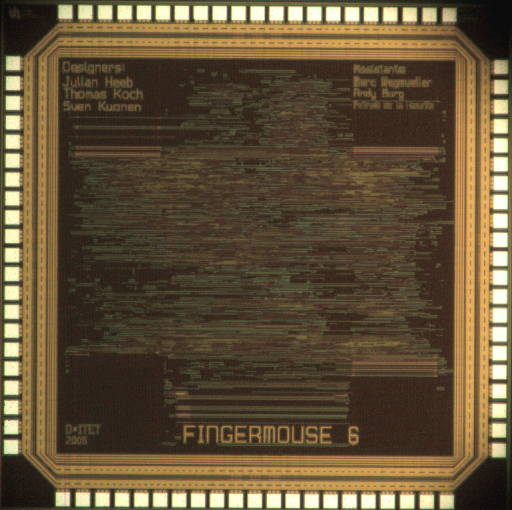The IIS Chip Gallery
Fingermouse (2005)

by

| Application | Graphics |
| Technology | 250 |
| Manufacturer | UMC |
| Type | Semester Thesis |
| Package | LCC84 |
| Dimensions | 2500μm x 2500μm |
| Voltage | 2.5 V |
| Power | 77 mW, 80MHz, 2.5V |
| Clock | 107 MHz |
The FingerMouse ASIC is part of an electronic stereo vision system that recognize objects that are closer to the two cameras than the background, thus able to capture a pointing finger of the user's hand. In the stereo image, matching image areas are detected and a depth map is derived. The processed output image contains the shape of the user's hand, the position of which can be tracked. The two digital video streams are acquired, and simultaneously the color format is transformed. The resulting image is transferred line by line and the ASIC buffers 4 lines. On this buffer, two algorithms are applied which seek for image areas that correspond in the two images: a sum of the absolute differences (SAD), and in parallel, the Census correspondence function detects similar regions by using intensity comparison of a pixel to its neighbors.
From the combined similarity values of compared regions, the disparity is computed which allows to classify the image areas as foreground or background. The FingerMouse algorithm has been implemented for a stereo video stream from two cameras with a pixel clock of 5 MHz. 20 images per second of the size 1380 x 1020 are processed with a system clock of 80 MHz. The core occupies an area of 3.56 mm2. Measurements showed a core power consumption of 77 mW. A demo system has been implemented at the Institute of Electronics (IfE).